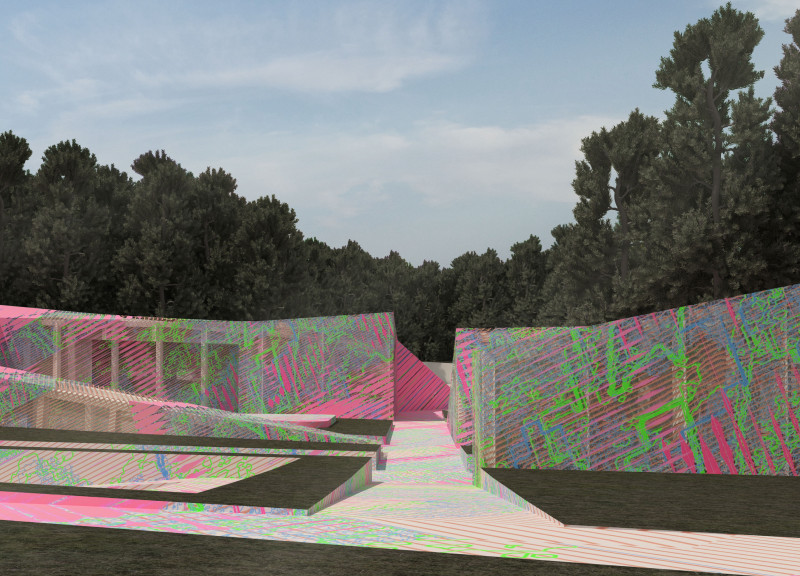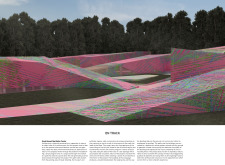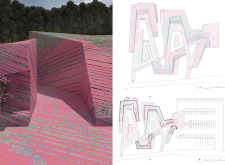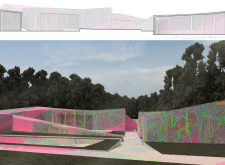5 key facts about this project
The primary function of the visitor center includes providing information, guiding visitors, and offering recreational opportunities. Spaces within the facility are strategically organized, including ticketing areas, educational exhibitions, and communal gathering spots. The design promotes movement through various circulation routes that enhance visitor engagement with both the architecture and the surrounding landscape.
Sustainable Material Selection and Aesthetic Integration
A notable feature of the Great Kemeru Bog Visitor Center is the thoughtful selection of materials, which are integral to both functionality and aesthetics. The structure primarily employs reinforced concrete for its durability and stability. Transparent glass elements are utilized to ensure ample natural light while creating a visual connection to the breathtaking views of the bog and surrounding forest. Additionally, textured panels contribute to both the acoustics and climate control of the space, allowing for a comfortable experience.
The color palette of the project uniquely diverges from conventional earthy tones found in many visitor centers. Incorporating vibrant pinks and greens, the design emphasizes key features and promotes a lively atmosphere, encouraging visitors to immerse themselves in the experience rather than merely observing from a distance.
Innovative Circulation Design
The circulation pathways throughout the Great Kemeru Bog Visitor Center are designed to facilitate exploration and interaction. The meandering paths guide visitors through different areas, with careful placements of observation points that provide visual exploration opportunities. This dynamic circulation approach allows users to experience the natural environment in a more intimate and engaged manner.
The architectural design also emphasizes the relationship between the built environment and the landscape. By integrating elevation changes and varying perspectives of the bog, the visitor center creates a dialogue between architecture and nature. This strategy enhances the sensory experience and fosters an appreciation for the ecological significance of the site.
The Great Kemeru Bog Visitor Center is a well-conceived architectural project that excels in its integration of sustainable practices and user engagement. To explore further details such as architectural plans, sections, and specific design elements, interested readers are encouraged to delve into the comprehensive project presentation available.


























